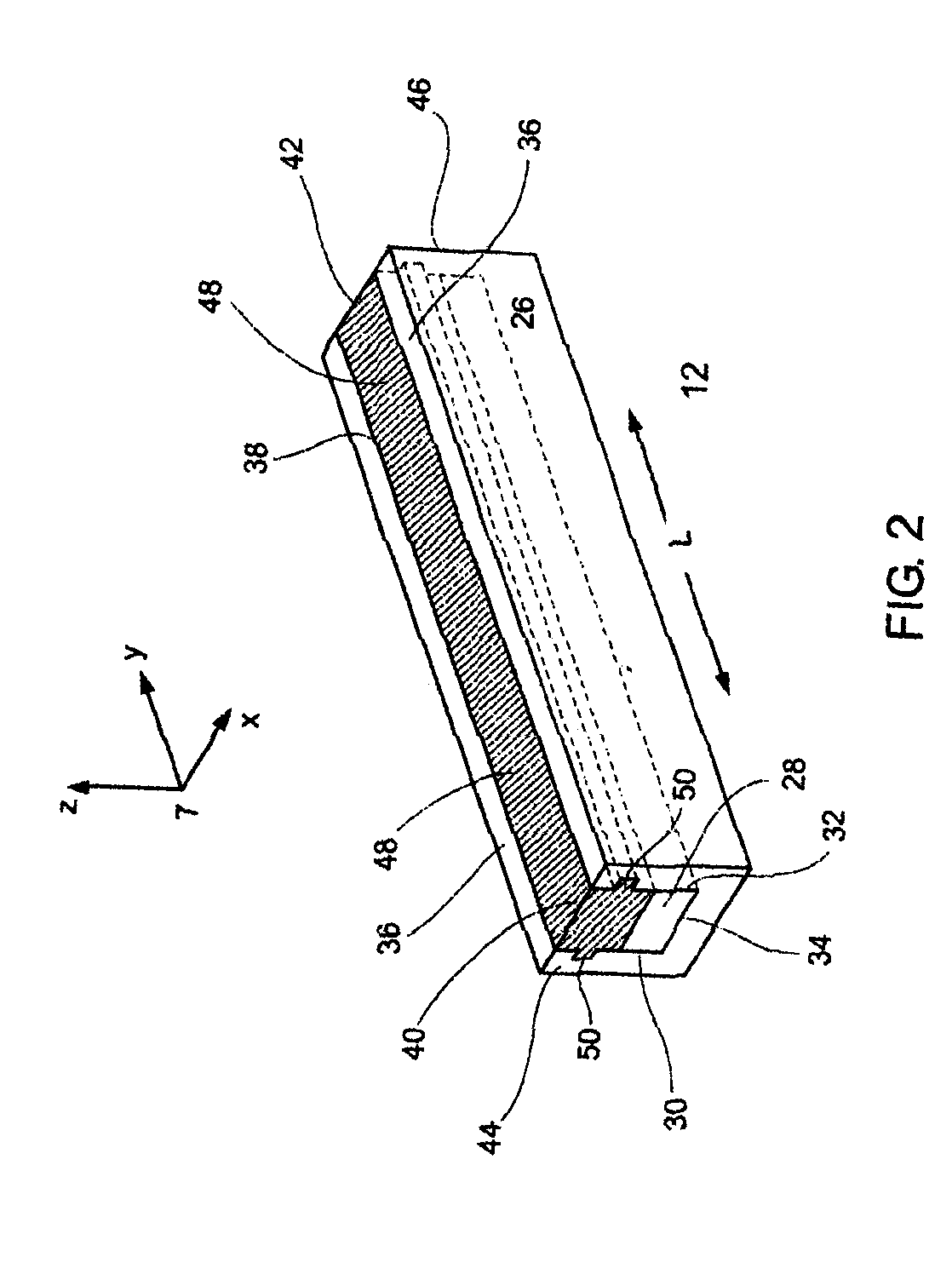Using surface microwaves for measuring and determining density and/or moisture content of a material
a technology of density and moisture content, which is applied in the direction of measuring devices, scientific instruments, instruments, etc., can solve the problems of unsatisfactory material rejection, added cost to the finished product, and manufacturing down time, and achieves the effects of high sensitiveness, accurate, and precise, and is suitable for commercial manufacturing applications
- Summary
- Abstract
- Description
- Claims
- Application Information
AI Technical Summary
Benefits of technology
Problems solved by technology
Method used
Image
Examples
Embodiment Construction
[0026]The present invention relates to a method, and corresponding device and system thereof, using surface microwaves for measuring and determining density and / or moisture content of a material. Microwaves are transmitted into the first end of a surface microwave waveguide having an externally exposed flat top surface immediately above which spans a proximate free space region within which the material is positioned. A first portion of the transmitted microwaves propagate within and through the surface microwave waveguide and a second portion of the transmitted microwaves propagate within and through the proximate free space region including the material, such that parameters (amplitude, phase, attenuation, and phase shift) of the propagating microwaves are perturbed by the material and are a function of density and / or moisture content of the material positioned within the proximate free space region. The propagating microwaves exiting the second end of the surface microwave wavegu...
PUM
| Property | Measurement | Unit |
|---|---|---|
| relative permittivity | aaaaa | aaaaa |
| relative permittivity | aaaaa | aaaaa |
| operating frequency | aaaaa | aaaaa |
Abstract
Description
Claims
Application Information
 Login to View More
Login to View More - R&D
- Intellectual Property
- Life Sciences
- Materials
- Tech Scout
- Unparalleled Data Quality
- Higher Quality Content
- 60% Fewer Hallucinations
Browse by: Latest US Patents, China's latest patents, Technical Efficacy Thesaurus, Application Domain, Technology Topic, Popular Technical Reports.
© 2025 PatSnap. All rights reserved.Legal|Privacy policy|Modern Slavery Act Transparency Statement|Sitemap|About US| Contact US: help@patsnap.com



